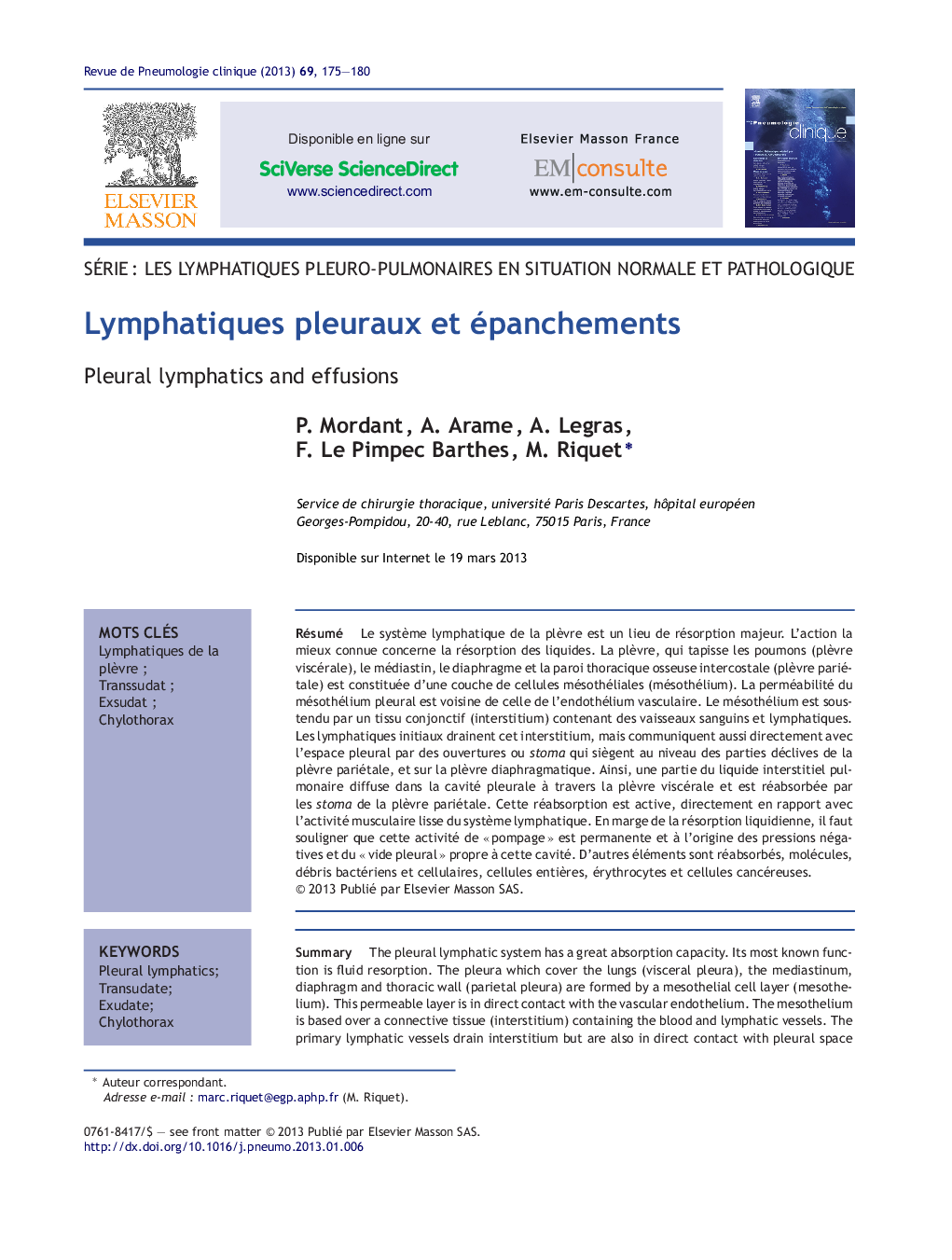| Article ID | Journal | Published Year | Pages | File Type |
|---|---|---|---|---|
| 3419614 | Revue de Pneumologie Clinique | 2013 | 6 Pages |
Abstract
The pleural lymphatic system has a great absorption capacity. Its most known function is fluid resorption. The pleura which cover the lungs (visceral pleura), the mediastinum, diaphragm and thoracic wall (parietal pleura) are formed by a mesothelial cell layer (mesothelium). This permeable layer is in direct contact with the vascular endothelium. The mesothelium is based over a connective tissue (interstitium) containing the blood and lymphatic vessels. The primary lymphatic vessels drain interstitium but are also in direct contact with pleural space by the stoma or openings, situated in the lower parts of parietal pleura, i.e: diaphragm, over lower ribs and mediastinum but not existing in the adjacent visceral pleura. In addition, a part of interstitial pulmonary fluid entered in the pleural cavity by passing the visceral pleura would be absorbed by these openings. The resorption process is active and directly related to the function of smooth muscles of lymphatic vessels. Besides resorption, we must emphasize that this “pumping” activity is permanent and the origin of negative pressure (the pleural void) in pleural cavity, a unique property. The other resorbed elements are molecules, bacterial and cellular debris, cells, red blood and cancer cells.
Related Topics
Health Sciences
Medicine and Dentistry
Infectious Diseases
Authors
P. Mordant, A. Arame, A. Legras, F. Le Pimpec Barthes, M. Riquet,
